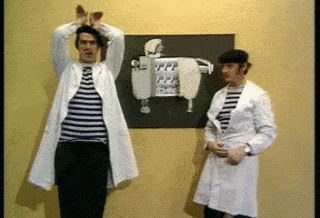-
Posts
702 -
Joined
-
Last visited
Content Type
Profiles
Forums
Store
Downloads
Recruiting - 2020
2019-2020 Football Season
Football
Entertainment
Sports
News and Business
Cloak Room
Transfer Portal
Recruiting
Events
Posts posted by Txzen
-
-
Just now, Elmer_Fudd said:
Had a guy completely wide open.
Dude was so open even Orji could have hit him.
-
 1
1
-
-
I don’t care who wins, just want it to be embarrassing for both. And this delivers.
-
 2
2
-
-
Not that this matters, but hate this meatchicken score.
-
 1
1
-
-
1 minute ago, Michael Knight said:
We're up by 25 on the road in the big house and you fucking morons are still bitching
We’re Texas.
-
 1
1
-
-
Just now, PenelopeWitherspoon said:
Wow. Nice having an excellent Offensive Line, it’s been a while.
Tom Brady monotone is more exciting that Michigan’s O.
-
 1
1
-
-
-
Just now, Rickylovesweed said:
No sense of urgency at all from Michigan.
This is their hurry-up. Pay attention.
-
 2
2
-
 2
2
-
-
Refs are competent as Michigan’s offense.
-
 1
1
-
-
Scoreboard bitches.
-
 1
1
-
-
Wtf refs.
-
 1
1
-
 1
1
-
-
Not our best series.
-
Great throw, great catch
-
Just now, Macklemore said:
It’s so fucking awesome to have an elite head coach who is the best offensive play caller in college football
And recruiter.
-
 1
1
-
-
Welcome back blue
-
Prepare for fuckery
-
Play calling has been good.
-
 1
1
-
-
Fuck yes
-
That team...I'm not sure what they did to anger the Gods this season but they are freaking cursed. Gutted for him as he's an amazing talent and a very likable guy.
-
Great pics - what’s your camera rig?
-
Adding to the data points - Global Entry renewal : submitted January...just received approval today. So, 7 months. Thankfully had conditional approval during the review, as it would have lapsed.
-
 1
1
-
-
1 hour ago, Jerry Callo said:
I don't think Jonas is way off of form - much better than I anticipated at the beginning. Not saying he is 100% but he has raced pretty well: beating Pog on a sprint to the line for a stage win and blowing out previous records on important climbs. If Jonas is riding at 75-80% this year, this will be Pog's last win in the TdF. We'll see next year.
All this empty talk of Tadej doing…Jonas was in pieces this Spring, and had limited time to train yet was just a little off the pace of the best rider of this generation. He’s the one who attacked and rode across to the break on the last climb, yet there’s no accusations for what he’s on?
it’s always a concern or a question in this sport, but I prefer to focus on the positives.
Loved the interview with Cav yesterday- that he thought it was more fitting for his last Tour stage to be suffering at the back to ‘stay in this beautiful race’, as that was more symbolic of his time in the Tour than a fairy tale sprint in Paris. Hard not to really like this guy.-
 1
1
-
 1
1
-
 1
1
-
-
What a great climb - my kind of quiet road to nowhere.
Love the way EF have animated the race, even if it wasn’t always successful. Fuck yes Carapaz. Nice team time trial to get him in the break. And yes, like this Remco kid.
-
11 hours ago, Whitewater Horn said:
Man, that is some truth. The start of Pla d’Adet is demoralizing. And I did it in my 20s when I still lived over there. My son graduates next year and I promised to take him to Europe to ride some famous climbs and scenic routes. The “Circle of Death” area is cycling Heaven and at the top of his wish list. That ought to be a different experiment this time at my age.
I have no good recommendations for lodging in the valley on the side we finished today. But on the other side, just near Argeles-Gazost, can’t say enough about Pyrenees cycling lodge. Hautacam just across the valley, Aubisque, Solour, Spandelles nearby. Tourmalet, Luz Ardiden just down the road. Other lesser known rides, like the Cirque de Troumouse, abound. Gorgeous area.
-
 2
2
-
 1
1
-
-
I had my route backwards - we climbed the Hourquette from Acuns (they descended it). We kept going around and went down the Aspin, which was beautiful, technical, and scary.
Had no idea what Tadej was doing in the sprint yesterday and am convinced he’s burning too many matches…and then he did what he did today. Hell of a kick. But man, Jonas is incredible given how his Spring and lead up to the Tour went.
Monster stage tomorrow. Visma may have conserved some helpers today for the route tomorrow. Maybe they try to crack him but I’m not sure that’s going to pan out.
There are many climbs in this area I’d like to do again (and have had some second chances). Plateau de Beille is not one of them. I recall it not only unrelenting but mostly so heavily forested that you had no payoff for the work (unlike that great final climb today). Only at the end do you emerge from the forest to a plateau with some modest views. Not even a good cafe at the top, some rather ugly modern station (and I understand it recently burned so there’s not even that now).
I think the only thing that bears Tadej is Tadej. He races all heart, sometimes with reckless abandon. But if he can keep the tank topped off he’s got this one…I think!
-
 1
1
-




USC @ Michigan - CBS
in Football
Posted
Umm, maybe usc might have wanted to burn some clock there?